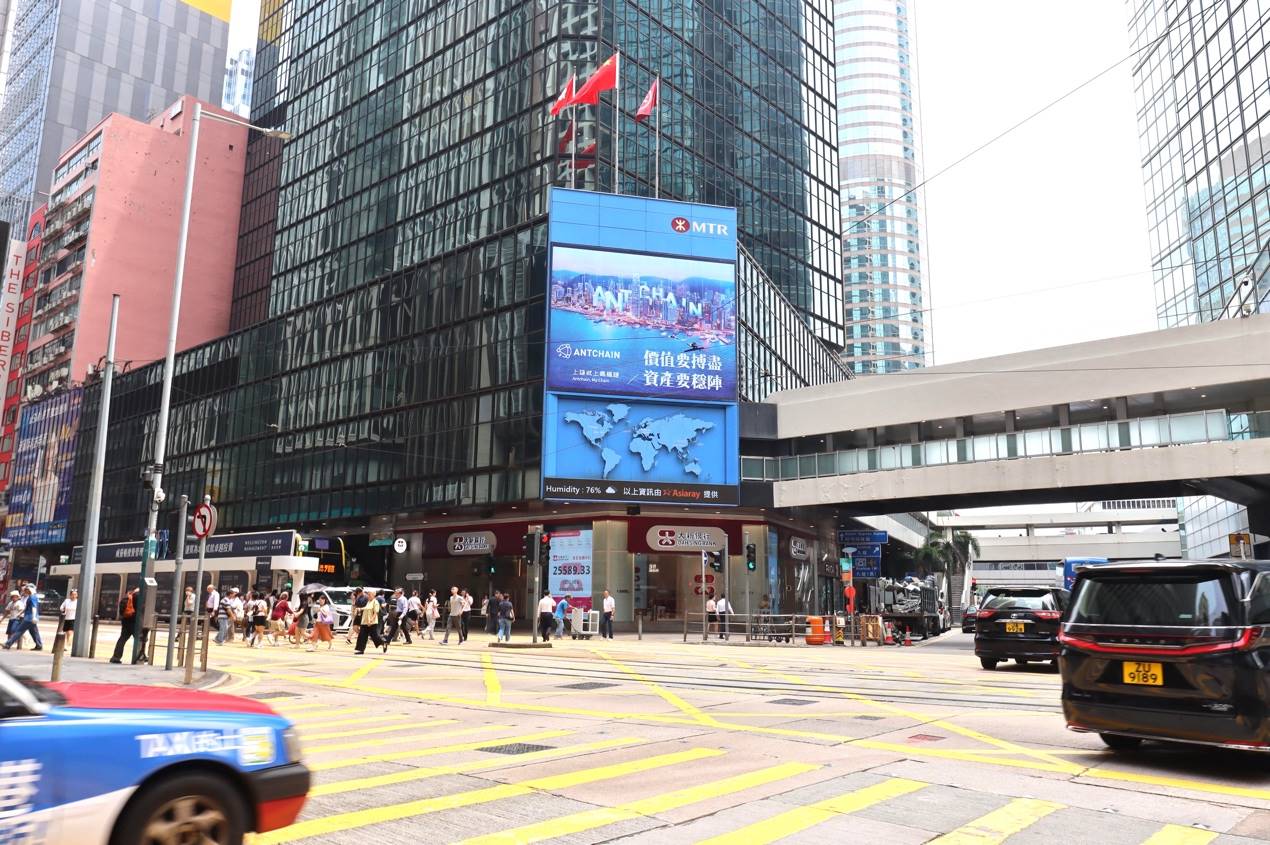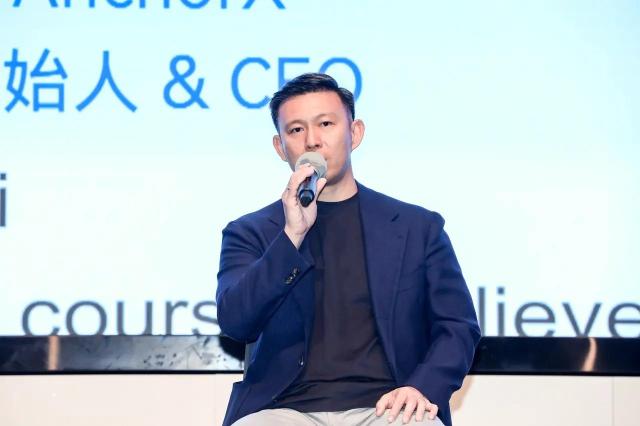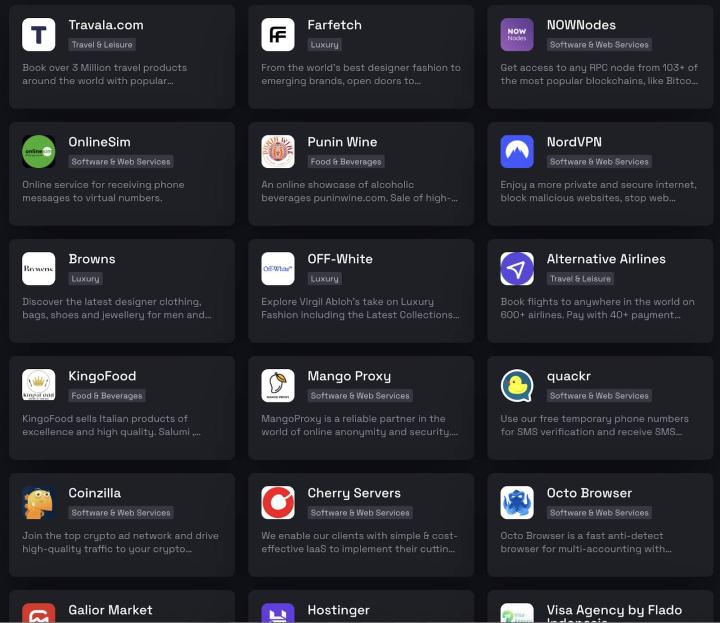Written by: TechFlow

That familiar Hong Kong is back!
Once dubbed a "financial ruin," Hong Kong has now completed an amazing comeback in just a short year.
The Hong Kong stock market is surging, with 43 new stocks listed in half a year, raising 106.71 billion Hong Kong dollars and returning to the top of global IPO fundraising. Giants like CATL and Hengrui Pharmaceutical have landed, while consumer stocks like Bubble Mart, Mixue Ice Cream, and Lao Pu Gold have ignited a bull market.
Along with the capital market's recovery, a wave of digital assets is also rising.
In May, Hong Kong passed the Stablecoin Regulation, establishing a licensing system for stablecoin issuance, which will officially take effect on August 1.
In June, the Special Administrative Region government released the "Digital Asset Policy Declaration 2.0", paving the way for the development of stablecoins and Real World Assets (RWA). And today, the Hong Kong Polytechnic University's signing with Ant Digital to jointly build an AI+Web3 joint laboratory adds the latest footnote to this recovery.
In a coffee shop in Central, familiar scenes have reappeared: On one side, investment banking elites excitedly discuss investment opportunities in Hong Kong and US stocks, while on the other side, entrepreneurs and lawyers are passionately discussing stablecoin and RWA issuance and cross-border settlement.
Amidst the coffee aroma mixed with various financial terms, it feels like returning to Hong Kong's golden era of vitality.
In the "Chain Hong Kong" era, where are the opportunities for entrepreneurs?
Digital Asset Policy Declaration 2.0
Following the first policy declaration in October 2022, on June 26, the "Hong Kong Digital Asset Development Policy Declaration 2.0" was officially released, again emphasizing Hong Kong's goal to become a global digital asset innovation center.
Notably, the new declaration upgrades the term "virtual assets" to "digital assets", which is not just a literal change, but means that the regulatory vision is not limited to cryptocurrencies like Bitcoin and Ethereum, but also covers token forms closely linked to real-world assets, namely the recently widely discussed RWA (Real World Assets).
To more clearly express the policy vision, the Hong Kong SAR government specially adopted a dynamic English acronym "LEAP" in the new declaration, representing four strategic pillars - Legal & Regulatory optimization, Expanding tokenized products, Advancing use cases & collaboration, and People & Partnership.
In terms of law and regulation, Hong Kong will establish a unified regulatory system led by the Securities and Futures Commission, covering key areas such as digital asset trading platforms, custody services, and stablecoins; meanwhile, the Financial Services Bureau and Monetary Authority will also promote legal reforms to support on-chain registration, settlement, and issuance of physical assets like bonds and gold.
In the tokenized product field, the government clearly proposes to make government bond tokenization a "normalized operation" and offer stamp duty concessions for ETF tokenized products. Additionally, the policy encourages tokenization of various real-world assets such as precious metals (like gold), non-ferrous metals, and even renewable energy (such as solar equipment).
In terms of practical application, this policy declaration clearly stated a key time point: from August 1, stablecoin issuers can officially apply for licenses. The government especially encourages stablecoin application pilots in practical business scenarios like payment and cross-border settlement, and will establish a special fund to support blockchain project implementation.
At the "Chain Hong Kong 2.0" ecosystem roundtable event, Ant Group's Vice President and Blockchain Business President Bian Zhuoqun pointed out: "In the new policy, I see three key words: digital assets, legal framework, and infrastructure. If our technological infrastructure has such a comprehensive compliance framework, and then introduces more assets, including industrial and financial assets, and forms a new digital asset exchange based on our advanced leading technology, we can gather excellent global assets and funds to Hong Kong."
Citigroup International's CEO Qi Haiying noted that the new declaration is globally leading in regulatory framework, market mechanism, and tax incentives. She particularly mentioned stablecoins and RWA as the "dual pillars" of digital assets, reflecting the forward-looking and inclusive nature of Hong Kong's regulatory authorities.
Where are the opportunities in Stablecoins and RWA?
Li Yuan, a serial entrepreneur from Shenzhen, has been frequently traveling between Shenzhen and Hong Kong recently.
He previously ran a manufacturing company and is now involved in new energy charging pile sectors, beginning to explore RWA. After the government's release of "Policy Declaration 2.0", he quickly studied each statement, trying to find his own "runway".
Among the many policies, he is most concerned with the part about the combination of "stablecoins" and "RWA" (Real World Assets).
"Stablecoin issuance is a game for giants, but scenario implementation is the opportunity for ordinary entrepreneurs." Li Yuan said.
In his view, stablecoins as a medium and RWA as a carrier mean that China's industrial assets, especially green energy and infrastructure sectors facing capacity pressure, have a chance to reach global markets through "chain-based going overseas". He even compares RWA to a "new round of Chinese asset export", a new export system supported by blockchain technology and facilitated by stablecoins.
This thinking is becoming a consensus.
Huaxia Fund's Hong Kong CEO Gan Tian said: "In the next 5 to 10 years, traditional financial assets will move on-chain, RWA will solve current market pain points, and Hong Kong will play a leading role in redefining the global asset circulation pattern."
This policy orientation is clearly expressed in Hong Kong's policy documents, with multiple contents encouraging tokenization of real-world assets, especially mentioning the new energy sector:
"We actively encourage innovative application scenarios, including tokenization of traditional financial products (such as money market funds and other funds) and revenue streams of real-world assets (such as electric vehicle charging stations)."
"The government will intensify efforts to expand tokenization solutions... including diverse applications of precious metals (like gold), non-ferrous metals, and renewable energy (such as solar panels)."
In this field, GCL Group's Vice Chairman Fei Zhi has firsthand observations. He points out that photovoltaic assets have characteristics of legal compliance, clear cash flow, clear property rights, and ESG standards, making them the most representative "on-chain asset" type. Through RWA, these green assets can provide solid value support for stablecoins.
Hong Kong and China Gas CFO Yang Leiming also noted that RWA can help energy companies tokenize fixed-income assets, improve asset circulation efficiency, and with stablecoins' international settlement function, potentially expand the global trade landscape.
In the practice of new energy RWA, Ant Digital is leading the industry.
Since August 2024, Ant Digital has successively collaborated with multiple new energy companies, putting charging piles, household photovoltaics, and other assets on-chain, transforming them into tradable RWA assets.
The first project landed in Hong Kong, partnering with Lanxin Technology, using approximately 9,000 charging piles as the base assets, completing financing of around 100 million yuan. Subsequently, in December 2024, Ant collaborated with GCL Energy to launch China's first photovoltaic green asset RWA project, with financing exceeding 200 million yuan. In March 2025, they further collaborated with Xunying Group to tokenize battery swap cabinets and lithium battery assets, involving funds amounting to tens of millions of Hong Kong dollars.
In the Ensemble sandbox program led by the Hong Kong Monetary Authority, Ant Digital has connected over 15 million energy devices through blockchain + IoT technology, creating the world's largest on-chain new energy asset platform.
As power generation assets, energy storage systems, and green financial instruments are gradually tokenized, a cross-border on-chain financial ecosystem has quietly taken shape. In the future, new energy RWA may derive credit products, financial derivatives, and carbon asset trading, constructing a global digital financial system anchored by power assets.
Chinese Assets, Tokenized in Hong Kong
For Li Yuan, Hong Kong is not just a city, but a bridge to the global market.
Leveraging Hong Kong's legal system, financial openness, and international environment, he can more efficiently connect with international capital and compliance institutions, which is the optimal channel for "going global" in the digital asset era.
With the release of the "Digital Asset Development Policy Declaration 2.0", Hong Kong is rising from a local financial center to a global digital asset rule exporter, creating an Eastern model for stablecoins and RWA.
"We use Hong Kong as Ant Digital's overseas headquarters, radiating to the Middle East and Europe, serving Chinese enterprises' global expansion, and ultimately bringing capital and trust back to Hong Kong," said Bian Zhuoqun, Vice President of Ant Digital, defining Hong Kong's strategic role.
In fact, Hong Kong's accumulation in blockchain infrastructure is not a short-term behavior.
Since 2016, Hong Kong has promoted blockchain technology applications in trade finance, payment clearing, and virtual asset regulation. The establishment of Cyberport laid the foundation for ecosystem development. In 2020, the government successively launched virtual bank licenses and the "Virtual Asset Trading Platform Operation Guidelines", providing a clear regulatory path for digital asset trading. In 2023, the "Digital Port Coin" project was initiated, exploring the synergy between central bank digital currency (CBDC) and tokenized assets.
In 2024, Ant Digital launched the "Two Chains One Bridge" RWA platform, promoting new energy asset tokenization and trading in Hong Kong. Lanxin Technology, GCL Energy, and Xunying Group successfully tokenized energy assets in Hong Kong, completing cross-border financing.
In June 2025, after the release of "Policy Declaration 2.0", Ant Digital simultaneously opened Layer 2 network, large model tools, blockchain + IoT architecture, and institutional-level Web3 wallets. In July, they reached a strategic cooperation with Hong Kong Polytechnic University to create a global technology innovation source around AI and Web3 technologies.
It can be said that Hong Kong has become a pioneering demonstration zone for Chinese new energy assets' "tokenization—financing—trading—cross-border circulation".
For mainland entrepreneurs like Li Yuan, Hong Kong is no longer just a traditional financing transit station, but a bridgehead that can push their technologies and assets to the global market. "Chinese Assets, Tokenized in Hong Kong, Going Global" may become a new choice for Chinese entrepreneurs.
In this emerging digital economic landscape, Hong Kong is both the starting point and the destination.





